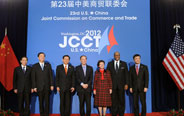

When Li was transferred to northeast China's Liaoning Province in 2004, he faced a different challenge.
There, Li was stunned to learn that nearly a thousand people in one town were sharing one toilet.
"The government will not hesitate to spend everything to help you move out of slums," Li vowed.
In March 2005, a renovation plan was released. Within three years, 1.2 million residents had moved into new apartments and the shantytowns had been relegated to history.
During the shantytown renovation, Li repeatedly emphasized the need to "put the people first," which later evolved into the essence of his governance philosophy.
Apart from housing upgrades, Li also explored ways to tap new growth points for the old industrial base.
He capitalized on the central government's Northeastern China Rejuvenation Plan and the national policy of further opening up the country's east coast to develop Liaoning's coastal areas. In this way, he worked to offset the province's disadvantages stemming from its reliance on heavy industrial manufacturing for growth.
In 2009, the province's coastal economic belt designed by Li became a national strategy and played a key role in the rejuvenation of the northeastern industrial base.
 |  |
 30 wushu masters join PLA Marine Corps
30 wushu masters join PLA Marine Corps Weekly review of military photos (2012.12.10-12.14)
Weekly review of military photos (2012.12.10-12.14) Those moments that melt your heart
Those moments that melt your heart Putin's diplomatic strategy becomes more pragmatic
Putin's diplomatic strategy becomes more pragmatic  Marine brigade in high-altitude parachute training
Marine brigade in high-altitude parachute training China and US agree on major trade measures
China and US agree on major trade measures Nanjing Yangtze Fourth Bridge to open on Dec.24
Nanjing Yangtze Fourth Bridge to open on Dec.24 Macao SAR celebrates 13th anniversary
Macao SAR celebrates 13th anniversary Dec. 21, 2012 is an ordinary day
Dec. 21, 2012 is an ordinary day Photos: Our pursuits of hope in 2012
Photos: Our pursuits of hope in 2012 Bone-chilling cold, but lots of fun!
Bone-chilling cold, but lots of fun! Female stars' grins: too horrible to look at !
Female stars' grins: too horrible to look at ! 7th China Int'l Cultural and Creative Industry Expo
7th China Int'l Cultural and Creative Industry Expo Christmas time around the world
Christmas time around the world 2012 international photography award winners
2012 international photography award winners